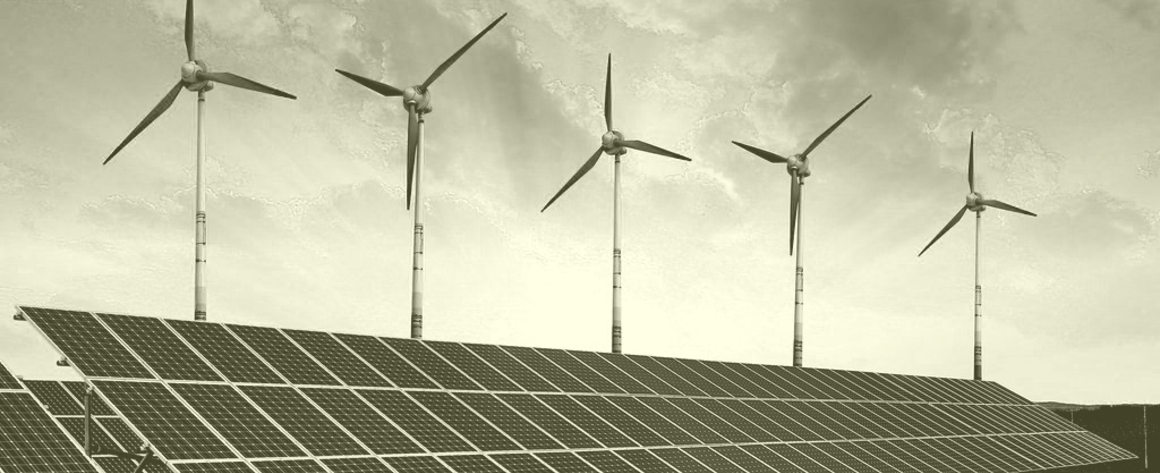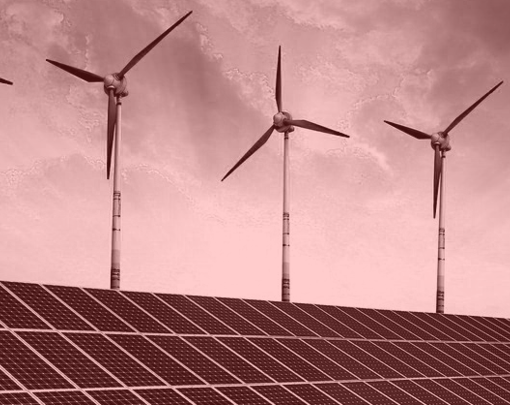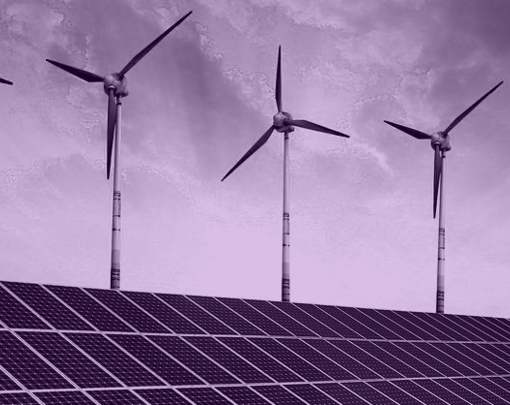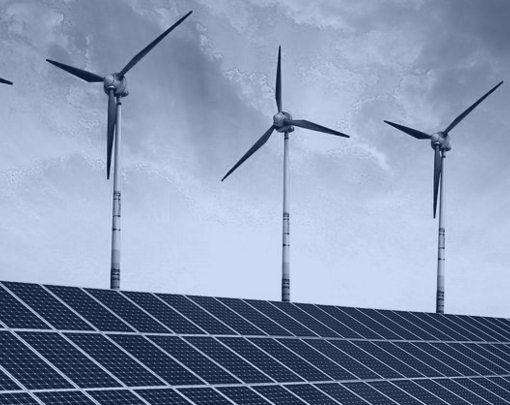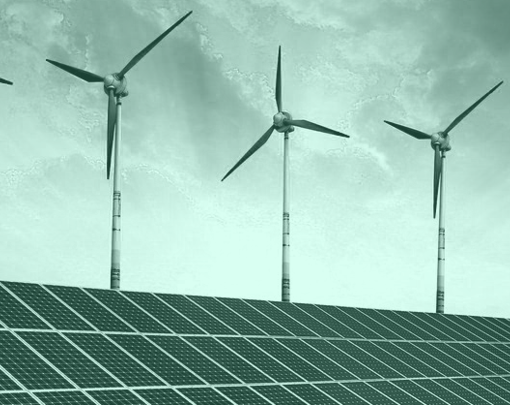Tax credits have been an instrumental tool in deploying solar and wind energy in the United States. In an energy market largely rigged in favor of fossil fuels, the credits have allowed renewables to expand and better compete. However, institutions that do not pay taxes—like local governments or nonprofits—and residents that don’t pay enough in taxes—like low-income households—can’t take advantage of this important incentive. For larger community-scale solar development, even sizable taxpayers like local businesses or cooperatives rarely have enough tax burden to utilize the hundreds of thousands or millions of dollars of tax credits at play. A tax credit only useful to larger corporate entities largely locks out community-based groups and others with the most to gain from the opportunity to own and benefit from the clean energy transition. We propose a simple transition from a renewable tax-credit to a direct incentive that specifically incentivizes local distributed renewable energy.
How tax credits work now
There are two different major tax credits available in the United States: the investment tax credit (ITC), largely used for solar, and the production tax credit (PTC), largely used for wind. A tax credit is a dollar-for-dollar reduction on the income taxes of a person or company that otherwise would have been paid to the federal government.
The ITC currently provides a credit (currently 26% of the upfront cost of a solar array) that can be used by homeowners that can apply the credit to their personal taxes when they install solar on their homes, or by commercial or utility investors that install, develop, and/or finance solar projects, whether on their personal property or larger projects with energy sold to others.1 Since the investment tax credit was enacted in 2005, the solar industry has grown by 10,000% and the sector has seen gains every year.2 Right now, the tax credit is poised to decline over time under the justification that cost of solar and renewables is becoming cheaper and therefore should be able to operate without incentives (keep in mind that fossil energy and nuclear continue to receive tens of billions in federal subsidies annually after many decades of operation).3 Starting in 2022, the solar ITC will be completely eliminated for residential solar and commercial solar will receive a 10 percent tax incentive.4 In December 2019, efforts to renew the credits were eliminated by President Trump in a federal spending deal.5
The PTC, largely used for wind but also applicable to other qualifying renewable projects, has been operating in some format since 1992. Differently constructed from the investment tax credit, the renewable energy operators receive a tax credit of $0.012 per kilowatt-hour of energy they generate during the first 10 years of operation.6 The PTC has gone through many cycles of boom and bust due to Congress allowing the credit to expire multiple times or giving unpredictable extensions. In 2015, Congress decided to implement a longer-term credit program that was scheduled to be phased out in 2019, but Congress granted a one-year extension of the credit through the end of 2020.7
The problem
First, in a hostile White House and Congress, the important credits have been rolled back on the justification that renewables should be competitive as well as out of pure anti-renewable sentiment. The idea that renewables should be able to operate competitively without subsidies is inherently flawed when the fossil fuel industry receives close to $650 billion in subsidies every year.8 This has been an important, relevant, subsidy to continue investment in the renewable economy and in fact needs to be made more accessible.
In particular, organizations, public institutions like local government, and low-income residents cannot themselves take advantage of the credit because of the structure of the incentive. A tax credit reduces the tax you owe at the end of the year. Nonprofits and government don’t pay any taxes and often many local businesses, cooperatives, or even low-income community members do not make enough taxable income to take advantage of the credit.9 Additionally, many larger projects require that the tax credits offset passive income or income from commercial real estate only, meaning that only certain types of investors with extensive income from investment activities or property ownership can benefit. All of these provisions slant ownership of clean energy towards those with extensive pre-existing wealth.
Low-income households in the United States suffer from major energy burdens, with energy bills taking upwards of 36% of their income. They are in the most need of the opportunity to lower their bills through a renewable energy option10 . However, the Urban-Brookings Tax Policy Center estimated in 2018 that the households in the lowest quintile had a negative average income tax—making it hard for low-income community members to put solar on their roofs.11 For community-scale projects, some local governments, cooperatives, or nonprofits like churches have been able to design creative workarounds via third-party purchasing agreements, but these institutions may still be paying more—and have less agency over—the renewable energy system now owned by large investment banks or corporations than if they had the ability to own the project directly.
As currently designed, the incentive structures also do not distinguish based on the scale of projects. Many of the most effective renewable energy systems are community-scale projects, which are large enough to achieve economies of scale in construction, yet small enough to fit into the existing electric grid, avoid the need for expensive new transmission lines, and even help to keep the lights on when the larger grid fails.12 Smaller, more local ownership also has a significant positive effect on the number of jobs and economic development provided to a region.13 These smaller-scale projects (often less than 5 megawatts (MW) for solar, and up to 20 MW for wind) – better for local ownership and a valuable asset to our grid—have somewhat higher installation costs per unit because of their smaller scale but still cost millions of dollars and generate several hundred thousand dollars or even millions of dollars in tax credits.
Answer: An inclusive clean energy credit
The current tax credit incentive structure has created an energy system that heavily skews renewable ownership to corporations or middle- to high-income households, as well as large-scale and centralized installations. Leaving ownership of the next energy system solely in corporate or already-wealthy hands has the potential to continue the legacy of consolidated wealth instead of utilizing the decentralized nature of renewable energy to actually redistribute wealth and democratize our grid via community or public ownership.
There is a simple and elegant way to shift this trend: apply the equivalent of the tax credit to non- or low-taxable entities. This could help shift renewable ownership by applying a straight incentive, available to all ownership types, that allows and incentivizes public, community, and low-income models of ownership. This redesign could also adequately reflect the values of distributed renewable energy from the perspective of a resilient grid as well as a format conducive to community ownership.
In this new subsidy system, smaller projects could be awarded a larger credit, compensating for the higher installation costs and recognizing their unique value to the grid. (See table.) Larger, utility-scale projects would still receive investments in this new setup, but considering those projects’ economies of scale and trend towards corporate ownership, this redesign could intentionally shift the paradigm of ownership to value distributed, local renewable energy generation held by nonprofits, cooperatives, local businesses, and low-income community members.
|
Size of the Renewable Energy Project |
Investment Credit |
Production Credit (Year 1-10) |
|
Small projects: <100kW |
30% of project costs |
$0.03 for each kWh produced |
|
100 kw - 1 MW |
25% of project costs |
$0.025 for each kWh produced |
|
1 MW - 5 MW |
20% of project costs |
$0.02 for each kWh produced |
|
5 MW - 25 MW |
15% of project costs |
$0.015 for each kWh produced |
|
25-100 MW |
10% of project costs |
$0.01 for each kWh produced |
|
>100MW |
5% of project costs |
$0.005 for each kWh produced |
This is part of a compilation of policy proposals for energy democracy in a Green New Deal assembled in conjunction with Cooperative Energy Futures and The Democracy Collaborative.
- 1“Solar investment tax credit (ITC)” Solar Energy Industries Association, accessed February 4, 2020, https://www.seia.org/initiatives/solar-investment-tax-credit-itc
- 2“Solar investment tax credit (ITC)” Solar Energy Industries Association, accessed January 27, 2019, https://www.seia.org/initiatives/solar-investment-tax-credit-itc
- 3“Fossil fuel subsidies: a closer look at tax cuts and societal costs,” Environmental and Energy Study Institute, July 29, 2019, https://www.eesi.org/papers/view/fact-sheet-fossil-fuel-subsidies-a-closer-look-at-tax-breaks-and-societal-costs
- 4“Investment tax credit for solar power,” EnergySage, January 7, 2020, https://www.energysage.com/solar/cost-benefit/solar-investment-tax-credit/
- 5Emma Foehringer Merchant & Julia Pyper, “How the White House killed clean energy tax credits,” Green Tech Media, December 19, 2019, https://www.greentechmedia.com/articles/read/white-house-killed-clean-energy-tax-credits
- 6“Renewable electricity production tax credit (PTC),” DSIRE, accessed January 27, 2019, https://programs.dsireusa.org/system/program/detail/734
- 7“Tax Policy,” American Wind Energy Association, accessed January 27, 2019, https://www.awea.org/policy-and-issues/tax-policy. “AWEA statement on extension of the Production Tax Credit,” American Wind Energy Association, accessed January 29, 2020, https://www.awea.org/resources/news/2019/awea-statement-on-extension-of-the-production-tax
- 8David Coady, et al, “Global fossil fuel subsidies remain large: an update based on country-level estimates,” International Monetary Fund, May 2, 2019, “https://www.imf.org/en/Publications/WP/Issues/2019/05/02/Global-Fossil-Fuel-Subsidies-Remain-Large-An-Update-Based-on-Country-Level-Estimates-46509
- 9What are tax credits,” Turbotax, 2019, https://turbotax.intuit.com/tax-tips/tax-deductions-and-credits/what-are-tax-credits/L1C2IkvRt
- 10“Low income households energy burden varies among states —efficiency can help in all of them,” U.S. Department of Energy, 2019, https://www.energy.gov/sites/prod/files/2019/01/f58/WIP-Energy-Burden_final.pdf
- 11“Low-income households energy burden varies among states—efficiency can help in all of them,” U.S. Department of Energy, 2019, https://www.energy.gov/sites/prod/files/2019/01/f58/WIP-Energy-Burden_final.pdf
- 12“Distributed generation of electricity and its environmental impacts,” U.S. Environmental Protection Agency, accessed January 27, 2019, https://www.epa.gov/energy/distributed-generation-electricity-and-its-environmental-impacts. Scott Burger, et al, “Why Distributed? A critical review of the tradeoffs between centralized and decentralized resources,” April 2019, IEEE.
- 13John Farrell, “Advantage Local – Why Local Energy Ownership Matters.” Institute for Local Self-Reliance, https://ilsr.org/report-advantage-local-clean-energy-ownership-matters/
